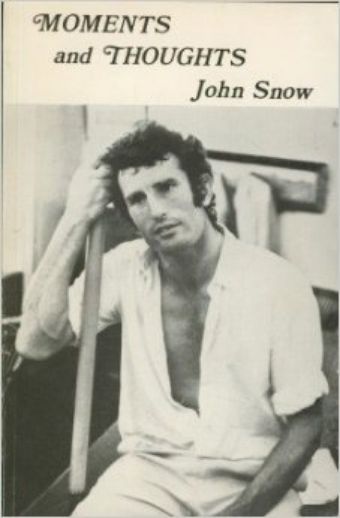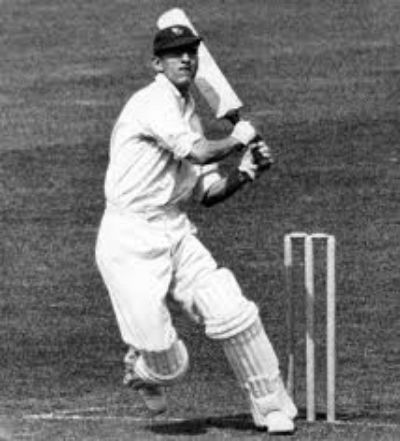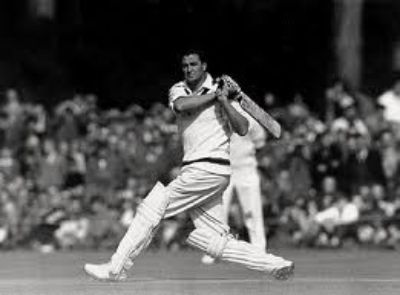Australia's No.8: Richie Benaud
During his career Richie Benaud claimed 248 wicket at 27.03 (SR = 77.0). However, these figures are misleading. In 1952 he was selected as an attacking ‘batting-allrounder’. That is, a batsman who also bowled some useful leg-spin. Consequently, his initial bowling figures were pretty awful. However, Benaud was determined to turn himself into a world class leg-spinner, and after about 2 ½ years he had achieved his goal. In effect, from 1954 onwards he was a strike bowler who was also capable of scoring a century – a ‘bowling-allrounder’.
Also, during the 1960-61 series against the West Indies he complained of shoulder pain. This gradually grew worse, and Benaud was finally diagnosed with fibrositis of his right shoulder. By 1962 the pain caused by the fibrositis badly effected his bowling, and this shown in the poor averages of his last 2 series.
Therefore, in order to calculate Benaud’s 'real' bowling figures we should only really consider the middle 7 years of his career. Here are his series results from those 7 years;
1954-55 WIN V AUS: Wickets = 18, Ave = 26.94, SR = 61.61
1956-57 AUS V IND: Wickets = 23, Ave = 16.87, SR = 44.30
1957-58 SAF V AUS: Wickets = 30, Ave = 21.93, SR = 64.57
1958-59 AUS V ENG: Wickets = 31, Ave = 18.84, SR = 60.19
1959-60 PAK V AUS: Wickets = 18, Ave = 21.11, SR = 74.67
1959-60 IND V AUS: Wickets = 29, Ave = 19.59, SR = 66.69
1960-61 AUS V WIN: Wickets = 23, Ave = 33.87, SR = 93.26
1961 ENG V AUS: Wickets = 15, Ave = 32.53, SR = 85.80 (Includes famous match winning 6/70 at Old Trafford)
If the series results are averaged out then they clearly indicate a genuinely great bowler, rather than merely a good bowler;
Benaud 1954-61
Tests = 40
Wickets = 192
Ave = 23.68
SR = 69.0
ER = 2.05
5w = 14
10w = 1
There was also the odd occasion where Benaud played like a great batsman as well as a great bowler. His greatest triumph as an allrounder was probably the 1957-58 series in South Africa when he scored 329 runs at 53.83 and took 30 wickets at 21.93. Importantly, those 329 runs included 2 centuries that were scored against none other than Adcock, Heine, Goddard and Tayfield! I don’t think that even Keith Miller matched that.
We can also get a sense of Benaud’s talent by judging the quality of batman that he dismissed. I don’t think that there’s much doubt that the array of batsman in the list are at least strong, if not stronger, than those offered by any other comparable spin bowler;
Cowdrey – 8
May – 8
Dexter – 7
Contractor – 6
Richardson – 5
T. Goddard – 5
Manjrekar – 4
Mankad – 4
Roy – 4
Weekes – 4
Endean – 4
Waite -4
Kanhai – 4
Barrington – 3
Shepherd – 3
Worrell – 3
Walcott – 3
Borde – 3
Sobers – 2
Graveney -2
McGlew -2
Bailey – 2
Umrigar – 2
O. Smith – 2
Compton – 2
Pullar – 2
Nurse – 2
Illingworth - 2
Lindsay – 2
Bland – 2
Subba Row - 2
Benaud was a classical 'leg-break googly' bowler, and so has been compared to his predecessors by a number of commentators. Roland Perry is one of them;
He fell between the styles of two great leggies, Arthur Mailey and Clarrie Grimmett. Benaud was never going to be the proliferate billionaire with the ball like Mailey, yet at times he was prepared to toss the ball up and tempt the batsman into having a heave-ho and he caused plenty of catches in the deep. Also like Mailey he could get bounce. Yet, on the whole, he was more like Grimmett, who used the top-spinner and wrong’un as surprises rather than stock deliveries, and who applied relentless pressure to batsman. Benaud worked on tying a batsman down and forcing error through adventurism or frustration. He could be pin-point accurate as the other great spinners, but was not afraid to vary his length to unsettle a batsman and keep him guessing. It was rare in Benaud’s career, particularly from the time of the 1956-57 tour of Pakistan and India (24 wickets at 17.66), and for the next seven years, for him to be smashed out of the attack. Not even the great Garry Sobers took control of him more than a couple of times in their many encounters.
‘Bradman’s Best Ashes Teams’
It is interesting that Perry commented on Benaud's accuracy ('pin-point accurate') because he doesn't seem to have that reputation. However, Benaud’s career Economy Rate of 2.11 clearly supports this observation. It is slightly better than Grimmett’s, and a deal better than Warne’s;
Career Economy Rates
Benaud = 2.11
Grimmett = 2.16
Warne = 2.65
When Ian Craig fell ill at the start of the 1958-59 season, Benaud was promoted to the captaincy ahead of vice-captain Neil Harvey, and he remained Australia’s captain till the end of the 1963/64 series against South Africa. His tenure began sensationally when charged with the task of wrestling back the Ashes from the favourites, England. Against the odds he led Australia to a 4-0 victory, thanks in part to his own contribution of 31 wickets at 18.84. Benaud never lost any of his 7 Test series as captain , and finished with a commendable record of 12 wins and 4 losses in 28 matches.
Mike Brearley rated Benaud’s captaincy highly, and described him as ‘One of the great captains’ in his book the ‘Art of Captaincy’;
One of the great captains, Richie Benaud learned much from playing for New South Wales under ‘the best captain never to lead Australia’ – Keith Miller, a fierce competitor who never allowed any game to atrophy. The same can be said of Benaud.
Benaud’s batting did pale in comparison to both his bowling and captaincy endeavours, however he still managed to score 2202 runs at a healthy average of 24.46. He made 3 centuries, 2 against South Africa and 1 against the West Indies. Against England specifically he managed 767 runs at 19.67 with 4 fifties, and a highest score of 97.
There is no argument that Shane Warne is the better leg-spinner of the two. However, after reviewing Benaud’s record, I don’t think that the gulf is that great. Therefore, I believe that Benaud as a total package is more valuable to this side than Warne. If this Ashes team was more conventional and contained only one spin bowler then Warne is the obvious choice. However, in this current scenario the spinner’s duties will be shared with Bill O’Reilly. Therefore, it really doesn’t matter too much that Benaud is slightly less consistent than Warne – Bill O’Reilly merely bowls more overs as necessary. And that’s not a bad thing!
By having Benaud in the team, Australia now has an ATG leg-spinner, one of crickets best bowling-allrounders, and its finest ever leader at the helm. Not a bad combination at all.





